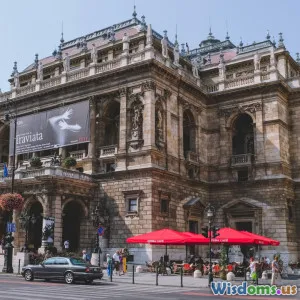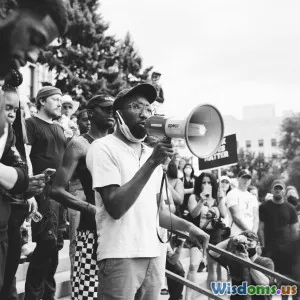
What Makes Luciano Pavarotti The Peoples Favorite Tenor
8 min read Explore how Luciano Pavarotti became the world’s most beloved tenor through unmatched vocal skill, charismatic performances, and groundbreaking cultural outreach. (0 Reviews)
What Makes Luciano Pavarotti The People's Favorite Tenor
Luciano Pavarotti remains an iconic figure in the world of opera and beyond, famous not just for his remarkable vocal ability, but for his genuine connection with audiences worldwide. But what is it that allowed this Italian tenor to capture the hearts of millions and earn the moniker "The People's Favorite Tenor"? This article takes a deep dive into his artistry, persona, and contributions to music and culture that made him a universal beloved figure.
An Unparalleled Vocal Instrument
The Golden Voice: Power Combined With Warmth
Pavarotti's voice possessed a unique combination of power, clarity, and lyrical warmth rarely heard before or since. His vocal range spanned several octaves, allowing him effortless high notes that dazzled fans and critics alike. Unlike some operatic tenors known for a more dramatic timbre, Pavarotti's tone was crystalline and bright without losing richness—making his voice immediately recognizable even within complex orchestral scores.
His signature aria "Nessun dorma" from Puccini's Turandot perfectly illustrates this. Music critic Alan Blyth once noted, "Pavarotti seemed to pour the sunlight itself into his singing." This aria became so closely associated with him that his recordings with the Three Tenors live at the 1990 FIFA World Cup helped propel opera into mainstream global consciousness.
Technical Mastery Grounded in Tradition
At the core of Pavarotti’s vocal prowess was rigorous classical training. He studied under Arrigo Pola and later Ettore Campogalliani in Italy, who helped refine the natural gifts his voice had in abundance. Known for his impeccable breath control and delicate phrasing, Pavarotti balanced traditional bel canto techniques—emphasizing beautiful tone and legato—with a natural emotional expression.
Charismatic Stage Presence That Transcended Opera
A Smile That Resonated
Beyond his voice, Pavarotti's approachable and generous personality played a huge role in endearing him to audiences. Often referred to as having the "golden smile," his warmth made listeners feel as though they shared an intimate moment despite the grandeur of the opera house.
His natural charisma was evident in televised performances and interviews alike. Even in the most technical and emotional scenes, such as the aria "La Donna è Mobile," his playful expressions and genuine engagement conveyed a spirit of joy and humanity that made opera less intimidating and more accessible.
Bridging Cultural and Social Gaps
Unlike many of his contemporaries who remained aloof or confined within elite opera circles, Pavarotti actively engaged with different genres and audiences. His collaborations with pop stars like Sting, Bono, and Mariah Carey broke down cultural barriers and earned him fans outside the traditional opera audience. Notably, his partnership in the "Three Tenors" concerts alongside Plácido Domingo and José Carreras brought an evangelizing spirit to bringing high art to the masses, with global live audiences estimated in billions.
Champion of Opera Accessibility and Humanitarian Causes
Bringing Opera to the Masses
Pavarotti was instrumental in popularizing opera by participating in free open-air concerts as well as televised specials. His 1991 concert at Central Park attracted over half a million people and became a model for how classical performances could reach a diverse audience without the barriers of ticket prices or formal settings.
He also helped produce numerous recordings and DVDs, enabling fans worldwide to experience opera at home. In the pre-YouTube era, this was revolutionary in preserving and disseminating high-caliber operatic performances.
Humanitarian and Philanthropic Efforts
Integral to his appeal was Pavarotti's dedication to humanitarian causes. Throughout his career, he used his fame to raise funds for refugees, disaster victims, and health causes. His "Pavarotti & Friends" charity concerts hosted in his hometown of Modena generated millions for UNICEF and war-affected regions like Bosnia.
As he put it, "A singer must give something to the people, not just take from them—all art should strive for that."
Enduring Legacy and Influence
Influencing a Generation of Tenors
Many contemporary tenors cite Pavarotti as their inspiration due to his technique and approach to performance. Singers like Juan Diego Flórez and Rolando Villazón continue to reference how Pavarotti's example encouraged them to achieve vocal brilliance without sacrificing emotional connection.
His recordings remain benchmarks for students and professionals studying the tenor repertoire.
Cultural Icon Beyond Music
Pavarotti's persona appeared in films, commercials, and documentaries, blending operatic tradition with popular culture. His collaboration with animator Bill Plympton demonstrated how opera could intertwine seamlessly with art forms outside music, broadening cultural implications.
Conclusion
Luciano Pavarotti earned his place as "The People's Favorite Tenor" not merely by possessing an extraordinary voice, but by sharing it with warmth, humility, and generosity. His blend of technical mastery, charismatic accessibility, and pioneering efforts in outreach created an unparalleled connection between opera and the global public.
Through his legacy, we are reminded that the power of music lies as much in emotional storytelling and human connection as in breathtaking technical skill. Pavarotti's voice continues to resonate—not just through recordings, but within the very way we conceive of what it means for classical music to be truly beloved.
“Pavarotti taught the world that opera is not an exclusive art form, but a universal language of beauty and humanity.”
Key Takeaways:
- Pavarotti's voice combined immense power with warmth and clarity distinguished him in the opera world.
- His approachable stage presence made opera less intimidating and more engaging.
- Collaborations with pop artists and affordable open-air concerts broadened democratization of classical music.
- His humanitarian efforts connected music and social causes.
- He influenced generations of tenors and popular culture, cementing a multi-faceted legacy.
Rate the Post
User Reviews
Other posts in Cultural History
Popular Posts















